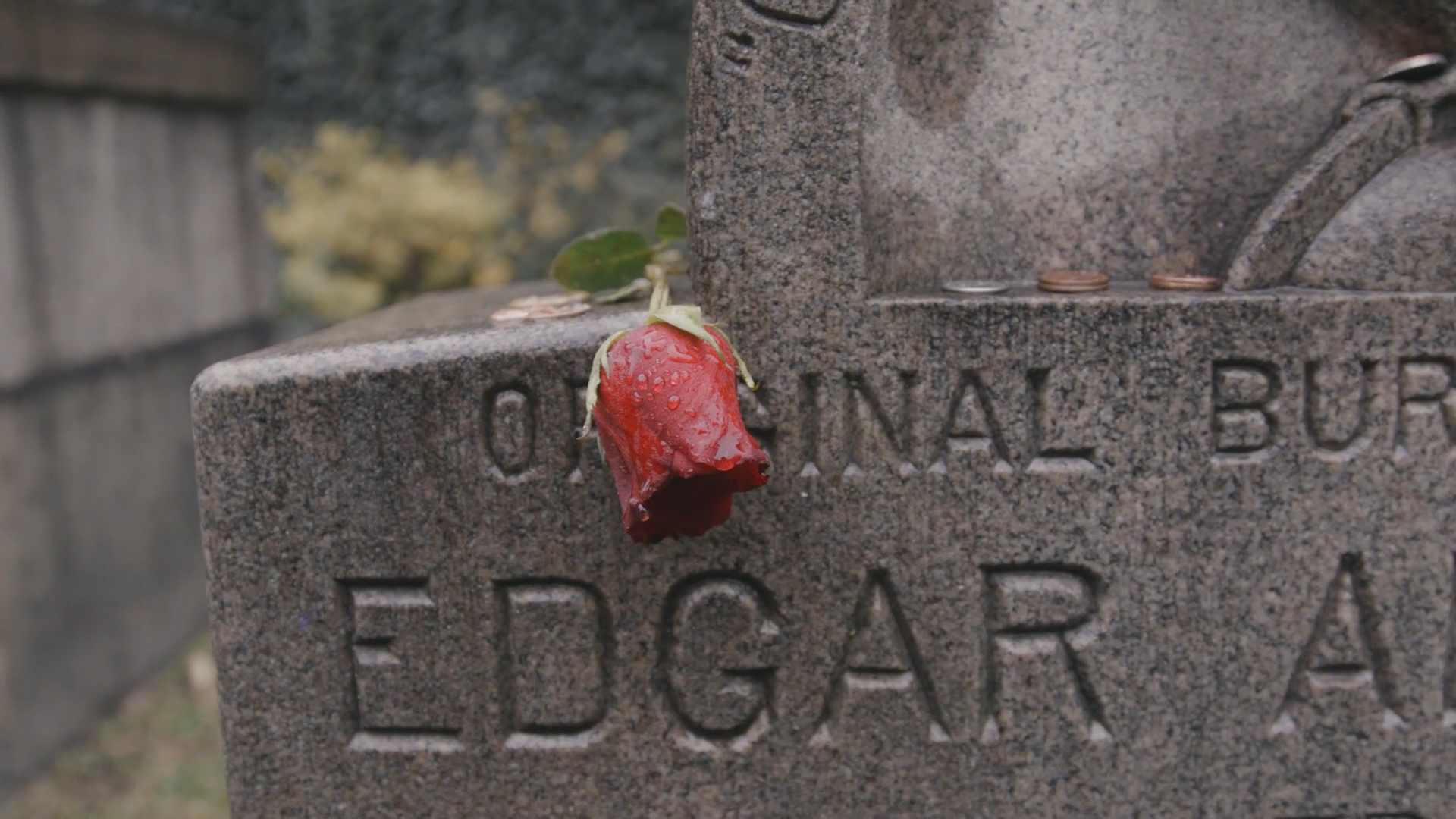A Michael Jackson impersonator wearing a sequin jacket, dances on an empty, sun-lit street. A man attempts to fly a kite from his backyard, but it falters and drops. “Oh well,” he says, “American kite, no wind. It ain’t gonna fly.” A factory chimney vomits thick, grey fumes, and a police helicopter speeds through the air surveying the metropolitan area below.

Lithuanian artist and filmmaker Gerda Paliušytė captures these scenes in Nevermore, a hybrid documentary that revolves around the Baltimore house museum of 19th century Gothic author, Edgar Allan Poe. It’s a historic building sitting within the oldest social housing scheme in the city, Poe Homes, now threatened with potential demolition. Paliušytė follows the lives of people associated with the museum and its namesake’s legacy, alongside those who live in the neighbourhood.
Recently screened at Vilnius’ CAC on December 8, 2019, Nevermore is an exploration of the subtle forms of resistance that emerge in a city marked by racial division, inequitable redevelopment and ecological ruin. Although Baltimore is notorious for its crime and social disparity produced by state violence and systemic racism, the scenes that represent evidence of this—such as the circling law enforcement choppers or polluting smokestacks—surface very occasionally in the film. Only sometimes do we witness the Maryland city’s deeply embedded racism and prejudice. In one scene, the chairman of Edgar Allan Poe House & Museum, David F. Gaylin, reports that some visitors are too afraid to get out of their car in the predominantly African American and low income area.

Paliušytė doesn’t silence or ignore this prejudicial side of the city. But she does give space to the lives of the people that inhabit it, many of whom have been marginalised. Her unobtrusive filmmaking allows them to speak easily to the camera, or to discuss their interests and thoughts between themselves, as if it were a silent but generous companion. There is a long and gently awkward conversation between the Poe museum’s teenage guide and a visitor, where they talk about their dreams and what the writer’s legacy means to them in their daily lives. There is a poetry reading and discussion in its low-ceilinged surroundings. These scenes are woven together as if they were set along a continuum. Nothing is particularly remarkable about any of them. But it is precisely because they are presented as ordinary and interconnected that Paliušytė emphasises how people find ways of being with each other and their environment in the everyday, in spite of the fear and discrimination dividing the community. As a father says, standing proudly with his two daughters, “We all have to still be one. No matter what. One is who we are as a general. Ya’ll from Lithuania. My family from Baltimore city. No matter what goes around us, we are still one.”
Paliušytė avoids a method of much mainstream narrative filmmaking, where oppressive systems and people are locked in a heroic or tragic struggle. In Nevermore,ordinary life isn’t presented as an epic struggle of resistance against state violence and structural inequality. Had its protagonists been presented as such, they would have been sentimentalised or tokenized, while also suggesting that power is the state’s alone.

The film instead emphasises power as complex and fluid, exploring how the structural violence of oppression can play out on an everyday level. Marginalised communities know classism and racism, all too well, but its control is never absolute. By focusing on everyday scenes which don’t necessarily lead anywhere but are all interconnected, Paliušytė makes it clear that all together they add up to an extensive network of resistance against these oppressive forces. In the film, a man tries to fly a kite—and fails—in a moment of idleness against a dominant culture of productivity, efficiency and success. Skaters wend their way through traffic, then lie down on the curb, refusing to see the road merely as a means to an end, and rather a space for escape. With lingering and sometimes gently swaying shots, Nevermore opens up a world of intimacy, vulnerability and care. The surveillance of the police helicopter overhead is glimpsed at but never truly captured in the film.
Paliušytė’s sustained focus is on people essentially just coming together gives the film a profound sense of hope. We will only feel hopeless if we lose sight of these fragile moments of interdependence and connection. In this sense, Nevermore is political in that it draws these moments out and stresses how they persist in manifold ways, even if they have been rendered invisible, silent or are forgotten. As American artist and writer Teju Cole notes, “cities are congested with traces of material history and the spiritual traces of those histories, including some very dark events.”

This sentiment is echoed by the proud father in the film. His own father was murdered when he was 14 years old, and yet he has placed care and unity at the centre of his life. “We all have to still be one,” he says. “If you let the ghost find you, you also gonna be one.” Similarly, the street, the house, the city, the air, the people in Nevermore appear themselves to be possessed—as Poe himself might have described it—in the double sense of being ‘haunted’ and ‘owned’. They are possessed by voices, memories and imperceptible but powerful forces. They are ‘owned’ in a deeper sense than property, by a myriad of beings and histories. These relationships are so interdependent that they can never be disentangled by police brutality, state violence and the private interests of the real estate corporations that threaten the Poe Homes community. Nevermore shows that despite their efforts to ‘cleanse’ and exorcise a city of its past, there will always be dancing in the streets.**













